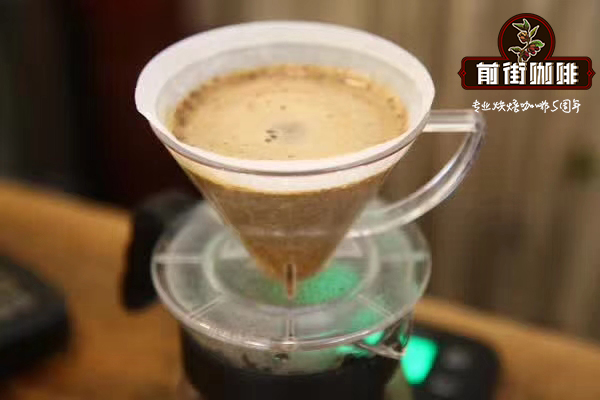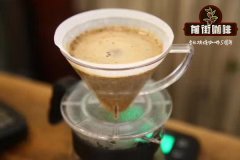The difference between the treatment of water-washed sun-cured coffee beans and the treatment of sun-cured coffee beans

Professional coffee knowledge exchange more coffee bean information please follow the coffee workshop (Wechat official account cafe_style)
Washing process:
Pick ripe red coffee fruit
The cherries have been washed. This removes any unnecessary excess material, such as dust and stone.
In the pulping stage, extract two coffee beans from the coffee cherry and remove the red skin and pulp. The pulp is put back to the plantation as fertilizer.
Coffee beans are fermented in a fermentation box and increase the taste of roasting through a series of chemical reactions. Wash the coffee again to remove the excess material left in the pulping process. After this washing stage, the water content of coffee reached 57%.
The last drying stage is used to reduce moisture to less than 12.5%.
Drying method
Coffee can be dried by manual dryer, sunlight or both.
When dried, the beans are placed on the brick or concrete terrace. Sometimes these are not available, while beans are put online by thin barbed wire, which is desirable. Frequent flipping makes the whole bean dry and takes 8 to 10 days to complete. It certainly depends on humidity and temperature, both of which can help or hinder this approach.
Hot air dryers make the process faster, especially for large coffee farms, where many beans need to be treated at once, and there may not be enough balcony space to dry all the beans. However, it is easy to accidentally damage coffee beans and destroy the quality of their cups, so it is necessary to carefully monitor the machine and the coffee beans inside.
The method of drying:
The coffee processed in this way has a fruity taste similar to jam, with a thick taste and a strong cup shape. This method is also known as "neutral" and, as one of the most outdated methods, does not require too many machines.
In the drying method, the whole hand-picked coffee cherries are dry. There are many differences in this process, depending on which group of people are performing the task, what facilities can be used, and the size of the entire plantation.
Sorting must be carried out first to eliminate any damaged, immature, or other defective cherries. Since cherries are not washed as they are in the wet process, excess waste, such as soil and twigs, is usually removed manually. If there is a washing channel, cherries can float in it, and the excess can be removed in this way.
Like the wet method, coffee is dried-however, in the dry process, the beans are still covered with fruit. Even dryness can only be ensured by turning the coffee regularly. Because coffee beans are still covered with cherry protection, it takes longer for coffee to reach its target of less than 12.5% moisture-up to four weeks, depending on the weather. Larger farms and plantations may consider drying coffee in the sun for a few days and then drying it mechanically to make the whole process less time-consuming.
After the cherries are dried in the sun, put them in a large coffee tube and send them to the mill to grind. The grinder will shell, classify and grade the coffee, and the peeling process will remove the fruit.
"even if it's dry, it's important. This prevents damage caused by overdrying (considered ineffective and not included in a batch) and overwetting beans, which break down easily and breed bacteria and fungi.
END
Important Notice :
前街咖啡 FrontStreet Coffee has moved to new addredd:
FrontStreet Coffee Address: 315,Donghua East Road,GuangZhou
Tel:020 38364473
- Prev

How to use chemex Coffee maker? how to drink elegance? how to use hand flush?
Professional coffee knowledge exchange more information about coffee beans Please follow the coffee workshop (Wechat official account cafe_style) to hold a party is a balanced move. You want others to feel taken care of, but you also want to visit your guests. It seems that just when you are ready to sit down and join the conversation, it is time to serve coffee. We often make one basic coffee at a time. Here
- Next

Colombian Coffee Variety Distribution what kind of coffee in Colombia
Professional coffee knowledge exchange more coffee bean information please follow the coffee workshop (Wechat official account cafe_style) Colombian coffee Colombian coffee was first introduced by Jesuits in 1723. As a commercial crop, it slowly spread all over the country, but its yield did not become important until the end of the 19th century. Traceability as a promotion of Goran
Related
- Beginners will see the "Coffee pull flower" guide!
- What is the difference between ice blog purified milk and ordinary milk coffee?
- Why is the Philippines the largest producer of crops in Liberia?
- For coffee extraction, should the fine powder be retained?
- How does extracted espresso fill pressed powder? How much strength does it take to press the powder?
- How to make jasmine cold extract coffee? Is the jasmine + latte good?
- Will this little toy really make the coffee taste better? How does Lily Drip affect coffee extraction?
- Will the action of slapping the filter cup also affect coffee extraction?
- What's the difference between powder-to-water ratio and powder-to-liquid ratio?
- What is the Ethiopian local species? What does it have to do with Heirloom native species?

